
We have had some very hot and dry days this past week with temperatures around 40c most days and also humidity as low as 6%. It is always hotter as you move away from the coast and more challenging for the birds as the last of the ephemeral lakes dry up. There has been no rain for months now and the foggy mornings are over for now. Fog provides much needed water for some birds, but now it is getting harder for them to survive until the rain arrives. Birds need to move around looking for water and gather in huge flocks in places where water remains.
We visited an ephemeral lake on Thursday as the temperature hit 40c and sat in what little breeze there was. There is very little shade for the birds, but there is still ample water. There were flocks of hundreds of Peaceful Doves and Diamond Doves. The sound of their wings as they all flew in was impressive. The header photo above shows the little bit of shade near the rocks. Not only were the doves flying in, but also Zebra Finch, Long-tailed Finch and Double-barred Finch. The birds all gathered in the little bit of shade and then flew down together to the branch that we always have placed in the water. The birds use the branch to access the water. You can see the branch in the far left of the header photo.
Tree full of finches and doves
Birds dipping down to drink from the branch
We always walk around the ephemeral lagoon and on Thursday we observed a very exhausted Red-collared Lorikeet flying in to join the other birds in the shade. It was quite unusual, because there were no flowering trees around and they are nectar feeders. They do not normally need to drink from lagoons, but with the extreme heat the Red-collared Lorikeet needed to rest.
One exhausted Red-collared Lorikeet
We hoped it would go down to the water, but we sat and waited and over an hour went by. Then another Red-collared Lorikeet called out and arrived at the same bushes. This bird looked even worse with its wings hanging down trying to cool off.
Red-collared Lorikeet with drooping wings
Eventually they both attempted to get near the water to drink and the first one went to the branch. The Red-collared Lorikeet perched on a lower branch and sipped the muddy water. It remained there with its tail feathers and lower body in the water and would keep sipping the water over a prolonged period of time.
Red-collared Lorikeet sipping water from the lower branch
The other Red-collared Lorikeet eventually decided to drop down to the edge of the water and drink from the muddy edge. It then flew back into the shade and remained there.
Red-collared Lorikeet drinking from the edge of the lagoon
We sat and observed all of the interaction at the branch. The other birds continued to drop in and drink, but the Red-collared Lorikeet was not leaving the branch it was stood on. We were quite content to sit and watch the Black-breasted Buzzards, Australasian Grebes, Black-fronted Dotterels, and the many other birds that came for water. A Wood Sandpiper was quite content walking in front of us.
Wood Sandpiper
By 2:15pm the Red-collared Lorikeet had been on the branch in the water for 45 minutes. It appeared saturated and we decided we should attempt to get it back in the shade near the other one. We needed to move around slowly to prevent the other one from leaving. That was successful, but then we needed to get the bird out of the water. We decided to try and bring the branch back to shore and we were able to do that and bring the Red-collared Lorikeet with it.
Red-collared Lorikeet on the branch
Bringing the branch to the edge of the lagoon
The Red-collared Lorikeet was completely saturated, so it could do no more than walk when it reached the mud. Grant picked it up and it still had the strength to hold on, but was very wet. We decided the best option was to place it as close as we could to the other Red-collared Lorikeet without disturbing it. Thankfully there was a thicker bush that we could utilise and it perched nicely in there. It would not take long for it to dry out and hopefully recover from the extreme weather.
A very wet Red-collared Lorikeet
Better camouflage and shade for the Red-collared Lorikeet
In these situations it is hard to know what is best to do, but we felt that to leave the Red-collared Lorikeet saturated on the branch would be cruel. There were a lot of raptors about and it would be easy prey. Hopefully it would recover and had another of its species nearby. We put the branch back in the lagoon in the original position for the other birds and left them to enjoy the precious water.


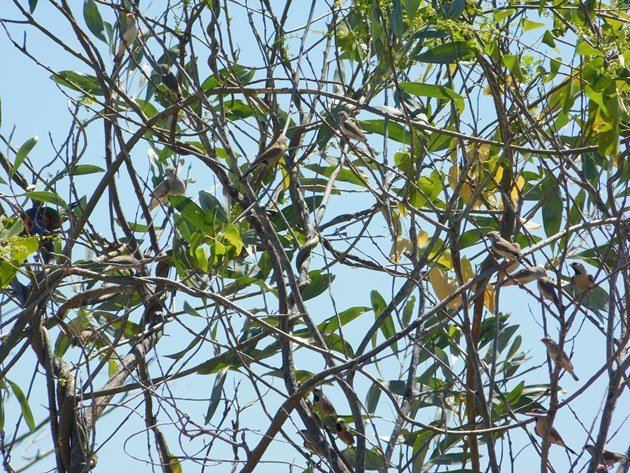

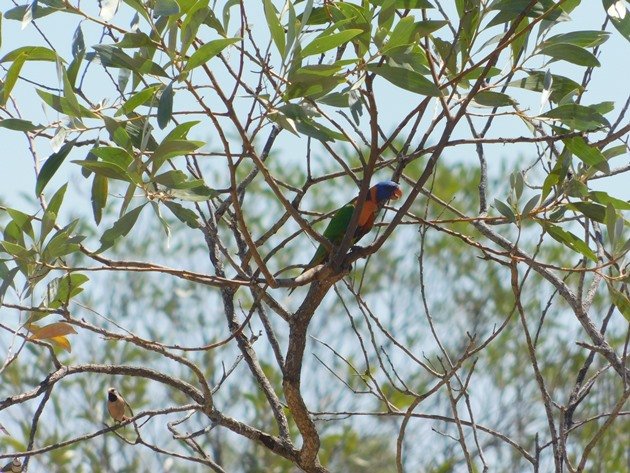








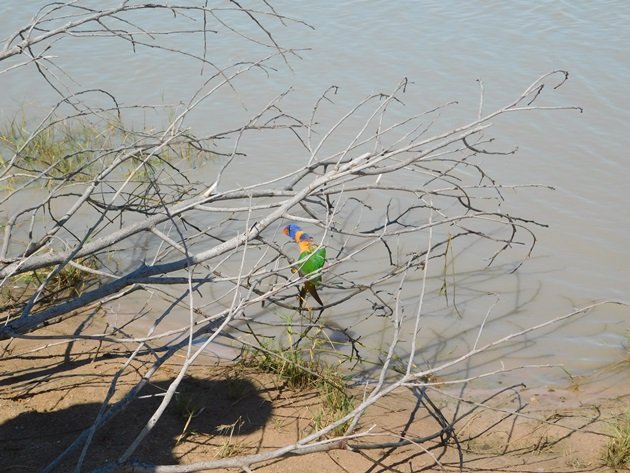


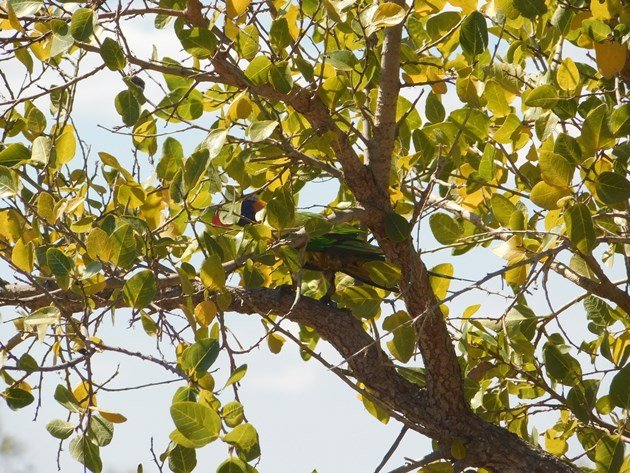



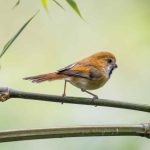



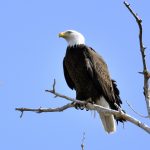


Thank you for rescuing the Lorikeet, Clare! It’s good to see a happy ending, and for a spectacular bird. Here on the West Coast of the USA, it’s smoke that has badly affected and killed many birds.
Yes, it is so sad to hear about the fires and smoke in the USA after Australia suffering so much early in 2020 with our bush fires.